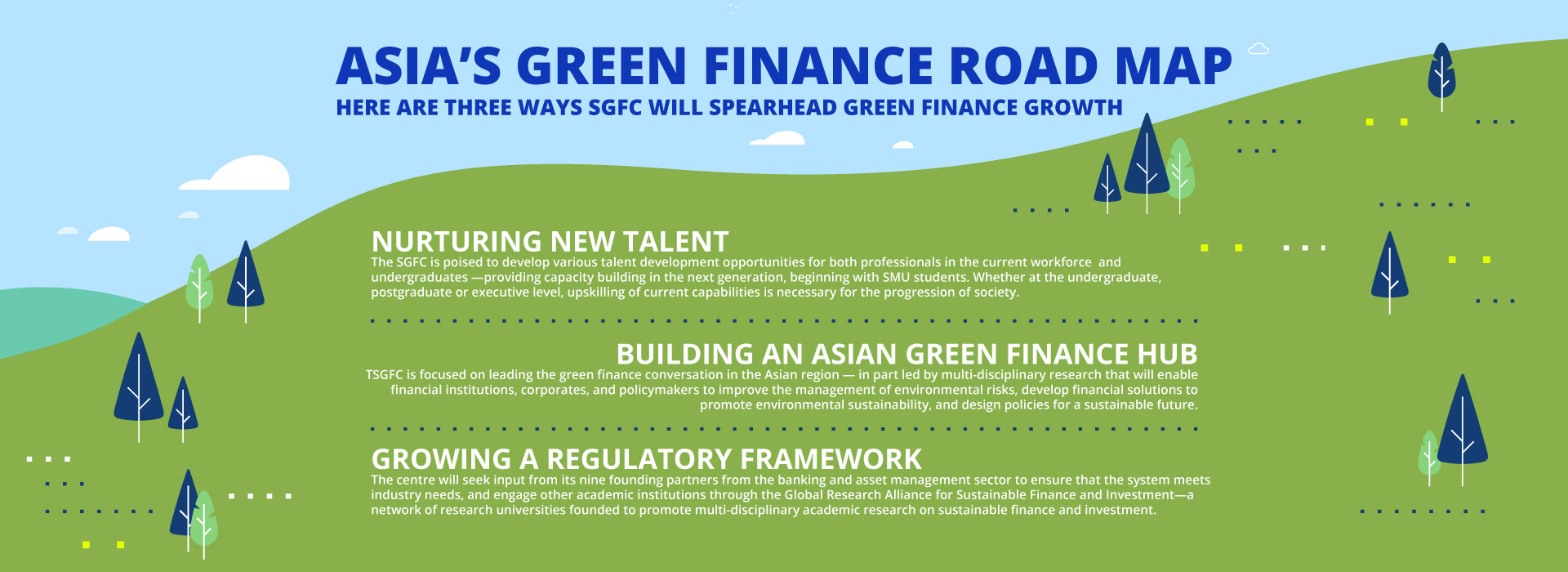Here is an article about Trump’s tariff policies from April 11, 2025. I’ll summarize the key points:
The article discusses how Trump’s recent “pause” on tariffs has created economic uncertainty globally. Key points include:
- Singapore’s advantage from its previous low 10% tariff rate has been eliminated now that Trump has “leveled out” tariffs.
- Potential significant damage to Singapore’s pharmaceutical and semiconductor industries, which account for about 10% of the GDP and employ 60,000+ people
- The article characterizes Trump’s approach as creating panic and maintaining “escalation dominance” for negotiating leverage.
- It suggests we’re entering a “World Minus One” scenario where countries will increasingly diversify away from economic dependence on the US due to its unpredictability.
- This follows the “China Plus One” trend from the 2018 trade war, where companies expanded production beyond China.
- The article notes that a bond market sell-off (both US stocks and bonds) may have prompted Trump’s decision to pause tariffs.
- It highlights a contradiction in Trump’s trade policy: reducing imports would mean that other countries have fewer dollars to buy US bonds.
The article seems to be from a Singaporean perspective, given the focus on impacts to Singapore’s economy.
Analysis of Trump’s Tariff Pause: Economic Implications
Effects of the Tariff Pause
The sudden pause in Trump’s tariff implementation creates a complex economic landscape with several immediate effects:
- Market volatility: While stock markets initially rallied after the pause announcement, the underlying economic uncertainty persists. The start-stop approach to tariffs creates an unpredictable business environment.
- Temporary reprieve: The pause provides only short-term relief from the immediate economic pain that would have resulted from full implementation.
- Negotiating tactic: As the article suggests, the pause appears designed to maintain “escalation dominance”—using economic pressure as leverage in international negotiations rather than pursuing coherent trade policy.
- Bond market stabilization: The tariff pause seems partially motivated by concerns about the US bond market, which experienced a concerning sell-off that Trump himself referenced.
Damage to Singapore’s Economy
Singapore faces particularly severe challenges from this tariff situation:
- Loss of competitive advantage: Singapore’s previous relative advantage from its low 10% baseline tariff has been eliminated by Trump’s decision to “level out” tariffs across countries.
- Vulnerable key industries: The article highlights that pharmaceuticals and semiconductors – which together represent approximately 10% of Singapore’s GDP and employ around 60,000 people – face potentially significant damage from looming US tariffs.
- Strategic uncertainty: As a trade-dependent economy, Singapore must navigate an uncertain future where traditional trade relationships cannot be relied upon.
- Need for diversification: To mitigate these risks, Singapore will likely accelerate efforts to diversify its economic partnerships beyond the US.
Isolationist Impact for the USA
The tariff policies point to increasing US isolation with several consequences:
- Trust erosion: The unpredictable implementation of tariffs damages international trust in the US as a reliable trading partner.
- Long-term economic damage: While the US can exert short-term pressure through its economic might, the article suggests this approach will ultimately harm the US economy.
- Bond market vulnerability: The article highlights how trade policies affect the broader financial ecosystem. If countries buy fewer US goods, they have fewer dollars to purchase US bonds, potentially destabilizing government financing.
- Contradictory policy goals: The desire to reduce trade deficits conflicts with the US economy’s reliance on foreign investment and bond purchases.

Impact on Asia
Asian economies face both challenges and opportunities:
- Continuation of “China Plus One”: The article references how the 2018 trade war led to the “China Plus One” strategy, where companies diversified production beyond China. This trend will likely accelerate.
- Diversification beneficiaries: Countries like India, Vietnam, Indonesia, and Thailand previously benefited from production shifts and may continue to do so.
- New regional alignments: The article points to Indonesia’s efforts to join BRICS as an example of countries seeking alternative economic partnerships.
- “World Minus One” scenario: The most significant prediction is a “World Minus One” future where countries systematically reduce economic dependence on the US, developing more resilient regional and cross-regional trade relationships.
This analysis suggests we’re witnessing a pivotal moment in global trade relationships, with long-term implications extending far beyond temporary tariff adjustments. The unpredictability of US trade policy may accelerate existing trends toward regional economic integration and reduce US economic influence globally.
Implications for Singapore and ASEAN Trade
Singapore’s Position
Immediate Challenges
- Loss of Preferential Status: With Trump’s “leveling out” of tariffs, Singapore has lost its comparative advantage from its previous 10% baseline tariff rate.
- Vulnerable Core Industries: The pharmaceutical and semiconductor sectors (10% of GDP, 60,000+ jobs) face significant exposure to potential US tariffs.
- Trade Dependency Risks: As one of the world’s most trade-dependent economies (trade is approximately 300% of GDP), Singapore is disproportionately affected by global trade disruptions.
Strategic Responses
- Accelerated Diversification: Singapore will likely intensify its efforts to reduce US market dependency by expanding trade relationships with other partners.
- Regional Integration: Deeper engagement with ASEAN markets becomes more critical as a buffer against US unpredictability.
- Industry Resilience Planning: The government may introduce targeted support for vulnerable sectors, potentially including tax incentives or grants to maintain competitiveness.
- Trade Agreement Focus: Singapore may prioritize strengthening existing agreements (like CPTPP, RCEP) and pursuing new bilateral agreements with stable partners.
ASEAN-Wide Implications
Regional Trade Dynamics
- Intra-ASEAN Trade Growth: Disruption in US trade relations could accelerate intra-ASEAN trade, which currently accounts for only about 23% of ASEAN’s total trade.
- Supply Chain Regionalization: Companies may restructure supply chains to maximize production within ASEAN to minimize exposure to US tariff volatility.
- Competitive Positioning: Different ASEAN nations will be affected unevenly based on their export profiles and US exposure.
Country-Specific Effects
- Vietnam: As a major manufacturing alternative to China and significant US trade partner, Vietnam faces substantial risk but also potential opportunity as companies seek further diversification.
- Thailand and Malaysia: Both have significant exposure to US markets in electronics and automotive sectors, making them vulnerable to tariff fluctuations.
- Indonesia and the Philippines: Potentially less immediately impacted due to lower relative US trade dependency, but still affected through global supply chain disruptions.
Collective Response
- ASEAN Solidarity: US trade unpredictability may strengthen ASEAN’s collective bargaining position and internal cohesion.
- Enhanced Regional Frameworks: Acceleration of the ASEAN Economic Community (AEC) initiatives to strengthen regional economic resilience.
- New Partnership Development: Increased emphasis on strengthening trade relationships with India, EU, UK, and Middle Eastern economies.
Longer-Term Strategic Shifts
“ASEAN Plus” Strategy
- RCEP Importance: The Regional Comprehensive Economic Partnership becomes more valuable as a framework for stable regional trade.
- China Relationship Recalibration: ASEAN nations may carefully rebalance their economic relationship with China as part of their diversification strategy.
- New Market Development: Collective ASEAN efforts to develop trade relationships with emerging markets in Africa and Latin America.
Institutional Development
- Financial Architecture: Potential strengthening of regional financial institutions to reduce dollar dependency.
- Regional Standards: Accelerated development of ASEAN-wide standards and certifications to facilitate intra-regional trade.
- Digital Trade Framework: Enhanced focus on digital trade agreements to capitalize on the region’s growing digital economy.
These developments suggest that while the US tariff situation creates immediate challenges, it may ultimately accelerate ASEAN’s economic integration and global diversification strategy. Singapore, as ASEAN’s most developed economy, will likely play a central role in coordinating this regional response while pursuing its own targeted diversification initiatives.
Impact on Singapore’s Diplomacy and Global Diplomatic Relations
Singapore’s Diplomatic Position
New Balancing Challenges
- Heightened Strategic Complexity: Singapore must recalibrate its traditional balanced approach between the US and China, requiring more nuanced diplomacy.
- Trusted Intermediary Role: Singapore’s reputation for neutrality and diplomatic finesse positions it as a potential mediator in an increasingly polarized international environment.
- Limited Leverage: As a small state, Singapore faces challenges influencing major power decisions but may find opportunities in coalition-building.
Diplomatic Adaptations
- Multi-vector Diplomacy: Singapore will likely intensify engagement across multiple fronts simultaneously – strengthening ties with traditional partners while cultivating new relationships.
- Economic-Security Linkages: Economic uncertainty may accelerate Singapore’s efforts to integrate economic and security diplomacy.
- Institutional Leadership: Singapore could increase its investment in multilateral institutions (ASEAN, UN, WTO) as platforms to advance its interests in a more volatile environment.
ASEAN’s Collective Diplomacy
Regional Diplomatic Coordination
- Coherence Challenges: ASEAN faces pressure to develop more coordinated diplomatic responses to external economic pressures.
- Centrifugal Forces: Different economic exposures among ASEAN members could strain the bloc’s unity in diplomatic positioning.
- Opportunity for Leadership: The situation creates space for diplomatic leadership within ASEAN, a role Singapore is well-positioned to assume.
Extra-Regional Partnerships
- Third-Party Engagement: ASEAN may deepen dialogue partnerships with other middle powers (Australia, Japan, South Korea, EU) as counterbalances to US-China tensions.
- Strategic Hedging: Collective diplomatic hedging strategies become more critical as regional uncertainty increases.
Global Diplomatic Landscape
“World Minus One” Diplomatic Implications
- New Alignments: The article’s “World Minus One” concept suggests not just economic but diplomatic realignments as countries seek more reliable partnerships.
- Trust Deficit: Erosion of trust in US predictability affects diplomatic relationships beyond trade, potentially extending to security arrangements and alliance structures.
- Institutional Stress: International institutions face increased strain from US policy volatility, creating both governance challenges and reform opportunities.
Middle Power Diplomacy
- Coalition Building: Medium-sized economies may form more active diplomatic coalitions to defend rules-based trade.
- Norm Development: New diplomatic efforts to establish predictable trade norms outside US leadership.
- Alternative Forums: The Growing importance of non-Western diplomatic forums (BRICS, SCO) as alternative coordination spaces.
Long-Term Diplomatic Transformations
Structural Changes
- Diplomatic Diversification: Just as economic dependency diversification becomes essential, so does diplomatic relationship diversification.
- Credibility Premium: Countries demonstrating diplomatic consistency and reliability gain increased influence as trust becomes a scarcer commodity.
- Multi-level Governance: Greater emphasis on city-to-city and regional-to-regional diplomatic engagement as sub-national relationships provide stability.
Singapore’s Strategic Opportunity
- Thought Leadership: Singapore can leverage its reputation to promote rules-based alternatives that enhance stability.
- Technical Diplomacy: Focus on less politicized areas of cooperation (climate, health, digital governance) where Singapore has expertise.
- Diplomatic Innovation: Potential to pioneer new diplomatic approaches emphasizing practical problem-solving over ideological alignment.
This analysis suggests that while the US tariff situation creates immediate diplomatic challenges, it may accelerate the development of a more multilateral, network-based diplomatic architecture. Singapore, with its tradition of pragmatic diplomacy and established reputation as an honest broker, has both the necessity and opportunity to help shape this emerging diplomatic landscape. However, it will need to carefully navigate the increased volatility of excellent power relations.
Implications for Singapore’s Trade and Labor Relations in the Global Context
Trade Relations Transformation
Immediate Trade Adjustments
- Diversification Imperative: Singapore faces urgent pressure to reduce its vulnerability to US trade unpredictability by expanding and deepening trade relationships with alternative partners.
- Strategic Recalibration: The US-Singapore Free Trade Agreement (USSFTA), historically a cornerstone of Singapore’s trade policy, may diminish in relative importance as Singapore seeks more reliable arrangements.
- Export Market Reprioritization: Singapore will likely accelerate efforts to increase export market share in regions showing more excellent trade stability, particularly within ASEAN, EU, and select emerging markets.
Industry-Specific Trade Impacts
- Pharmaceutical Sector Adaptation: With pharmaceuticals identified as vulnerable to US tariffs, Singapore may intensify efforts to diversify export markets for pharmaceutical products, particularly toward Europe, Japan, and emerging markets in Asia and the Middle East.
- Semiconductor Supply Chain Realignment: The semiconductor industry may pursue strategies including:
- Repositioning within global value chains to reduce US-facing exposure
- Developing deeper integration with non-US technology ecosystems
- Exploring new specializations in emerging technology areas less affected by tariffs
New Trade Partnership Development
- Enhanced Regional Integration: Acceleration of implementation and utilization of RCEP and CPTPP benefits to offset US market uncertainties.
- Strategic Bilateral Deals: Potential pursuit of strengthened bilateral trade agreements with stable middle powers (UK, Canada, Australia) and emerging economies (India, Gulf states).
- Service Trade Focus: Emphasis on Singapore’s strengths in service exports (financial, legal, consulting), which may be less vulnerable to traditional tariff barriers.
Labor Market Implications
Workforce Impacts
- Vulnerable Employment Sectors: The 60,000+ jobs in pharmaceuticals and semiconductors face varying degrees of risk, potentially requiring workforce transitions.
- Skills Adaptation Programs: Singapore may need to expand its skills development programs to help workers in affected industries transition to adjacent or emerging sectors.
- Labor Mobility Challenges: Workers in highly specialized roles may face particular difficulties if industry contractions occur, necessitating targeted support.
Labor Market Policy Responses
- Anticipatory Workforce Planning: Expansion of programs like SkillsFuture and Workforce Singapore initiatives focused on affected sectors.
- Industry Transformation Maps 2.0: Accelerated implementation of next-generation industry transformation strategies to manage employment transitions.
- Strategic Foreign Talent Policy: Potential adjustments to immigration policies to address emerging skills gaps or support growth in alternative sectors.
Global Labor Integration
International Labor Mobility
- Talent Flow Adjustment: Changes in global talent flows as manufacturing and high-tech workers respond to shifting opportunity landscapes.
- Singapore as Talent Hub: Opportunity to position Singapore as a regional or global talent hub for professionals affected by US trade uncertainty.
- Remote Work Dimension: Increased leverage of Singapore’s digital infrastructure and business environment to attract “digital nomads” and remote workers.
Labor Standards and Relations
- Trade-Labor Linkages: Greater emphasis on harmonizing labor standards in new trade agreements as Singapore pursues diversification.
- Tripartite Collaboration: Enhanced importance of Singapore’s tripartite model (government, employers, unions) in developing rapid responses to trade-induced labor market changes.
- Global Best Practices Exchange: Potential leadership role for Singapore in facilitating international dialogue on managing trade volatility impacts on labor markets.
Strategic Positioning for the Future
New Growth Paradigms
- Green Economy Transition: Accelerated focus on green growth sectors with more diversified global demand, reducing vulnerability to single-market volatility.
- Digital Trade Leadership: Expanded emphasis on digital trade frameworks where Singapore has competitive advantages and tariff impacts are less direct.
- Innovation Ecosystem Development: Strategic investment in emerging technologies and startups that can more flexibly adapt to changing global trade patterns.
Long-Term Resilience Building
- Supply Chain Resilience: Development of more robust supply chains with multiple redundancies to withstand geopolitical and trade disruptions.
- Strategic Reserves: Potential expansion of strategic reserves beyond traditional areas like food and energy to include critical industrial inputs.
- Economic Planning Recalibration: Adjustments to Singapore’s long-term economic planning to account for a world of higher trade volatility and reduced US economic predictability.

This analysis suggests that while Singapore faces significant challenges from US tariff volatility, its traditional adaptability and forward-looking economic planning offer pathways to navigate these changes. The city-state’s historical success in economic reinvention provides a foundation for managing these new trade and labor relations challenges, though the adjustment process may involve significant short-term disruption in affected sectors.
Coordinated Policy Recommendations
- Trade Agreement Enhancement
- Accelerate negotiations on existing trade agreements with non-US partners
- Pursue trade agreements with emerging markets
- Strengthen ASEAN economic integration to create more resilient regional markets
- Fiscal Support Measures
- Implement targeted tax breaks for tariff-affected sectors
- Create special economic zones with enhanced incentives for export-oriented businesses
- Provide wage support for affected industries to maintain employment levels
- Skills Development
- Retrain workers from affected sectors for industries with stronger growth prospects
- Develop specialized skills in supply chain optimization and trade compliance
- Create education programs focused on emerging global trade patterns
- Information and Advisory Services
- Establish a dedicated trade intelligence unit to monitor tariff developments
- Provide customized advisory services on tariff mitigation strategies
- Create industry-specific working groups to share best practices
By implementing these coordinated strategies, MAS and EDB can help Singapore businesses navigate the challenges posed by US tariffs while building more resilient business models for the future. The focus should be not just on short-term mitigation but on transforming this challenge into an opportunity to strengthen Singapore’s position in global value chains.
Potential MOF and Ministry of Community Collaboration to Address Tariff Impacts
While there isn’t specific information in the provided article about Ministry of Finance (MOF) and Ministry of Community Development plans, I can analyze how these ministries might collaborate to address the economic pressures from US tariffs:
MOF’s Potential Fiscal Interventions
Short-term Relief Measures
- Targeted tax rebates for businesses most affected by the 10% US tariffs
- Enhanced tax deductions for costs related to supply chain restructuring
- GST vouchers or cash payouts for lower-income households affected by price increases
- Enterprise financing schemes with favorable terms for tariff-impacted SMEs
Medium to Long-term Fiscal Planning
- Budget reallocation to strengthen domestic demand and reduce export dependency
- Infrastructure investment to improve logistics efficiency and reduce trade costs
- R&D tax incentives focused on developing higher-value products less sensitive to tariffs
- Funding for trade diversification initiatives to reduce US market dependency
Ministry of Community Development’s Potential Role
Social Support Systems
- Enhanced financial assistance for workers displaced by tariff-induced business restructuring
- Expanded ComCare schemes to support households affected by price increases
- Community outreach programs to identify and assist vulnerable groups
- Housing and utility subsidies for affected families
Skills Development and Employment Support
- Targeted job retraining programs for workers in heavily impacted sectors
- Employment facilitation services focused on growth sectors less affected by tariffs
- Education subsidies for upskilling in areas with strong future demand
- Community-based entrepreneurship programs to create alternative income sources
Coordinated Inter-Ministry Approaches
Joint Economic-Social Impact Monitoring
- Establish a cross-ministry task force to track combined economic and social impacts
- Create integrated data systems to identify emerging vulnerability hotspots
- Develop coordinated response protocols based on specific impact metrics
Community-Business Integration Programs
- Business adoption of community support initiatives as part of CSR
- Localized economic development plans that connect affected businesses with community resources
- Public-private partnerships to create resilient local economic ecosystems
Public Communication and Education
- Joint public education campaigns about navigating the economic changes
- Community workshops on household financial management during price fluctuations
- Information sessions about available government support programs
Policy Coordination Framework
- Synchronized policy implementation to ensure fiscal and social measures complement each other
- Regular inter-ministry review sessions to adapt strategies as tariff impacts evolve
- Shared accountability metrics that combine economic and social welfare indicators
These coordinated approaches would help Singapore manage both the economic challenges of US tariffs and their social impacts, ensuring that fiscal measures are aligned with community needs and that vulnerable populations receive appropriate support during this period of trade uncertainty.
Long-Term Diplomatic and Labor Shifts Projections
Diplomatic Realignment
Diversification of Trade Partnerships
- Singapore will likely accelerate efforts to diversify economic partnerships beyond the US
- Increased focus on strengthening ties with:
- ASEAN neighbors (Malaysia, Indonesia, Vietnam)
- Traditional allies that maintain free trade principles (UK, EU)
- Emerging markets like India and Middle Eastern economies
- Greater emphasis on digital and green economy partnerships, as mentioned by PM Wong
Regional Integration Acceleration
- ASEAN economic integration may deepen as a defensive strategy against protectionism
- Singapore could take a leadership role in establishing stronger intra-ASEAN supply chains.
- Potential for expanded ASEAN+3 cooperation (with China, Japan, South Korea)
- Development of more robust regional trade frameworks less dependent on US market access
US-Singapore Relations Evolution
- More transactional relationships likely to emerge after decades of strategic partnership
- Singapore may maintain security cooperation while reducing economic dependence.
- A diplomatic approach will balance maintaining US ties while pursuing alternative markets.
- Long-term positioning as a neutral intermediary between competing major powers
Labor Market Structural Shifts
Industry Transformation
- Accelerated restructuring away from US-dependent manufacturing segments
- Growth in sectors serving regional markets rather than global exports
- Increased focus on:
- Digital services that face fewer tariff barriers
- Regional headquarters functions for multinational companies
- Advanced manufacturing serving ASEAN markets
Skills Development Priority Areas
- The government is likely to prioritize workforce development in:
- Digital economy skills (software development, data analytics)
- Green economy expertise (sustainable development, carbon management)
- Services that support regional integration (logistics, finance)
- Enhanced emphasis on language skills for regional markets (Bahasa, Thai, Vietnamese)
Labor Mobility Patterns
- Potential brain drain of talent to markets with stronger growth prospects
- Counterbalanced by Singapore’s positioning as a safe haven amid global uncertainty
- More Singaporean professionals may work regionally rather than globally
- Increased competition for specialized technical talent with regional neighbors
Long-Term Economic Strategy Shifts
Supply Chain Reconfiguration
- Companies will likely reorganize supply chains to minimize tariff impacts
- Potential for “tariff-optimization” manufacturing where final assembly occurs in lower-tariff nations
- Singapore may position itself as a coordination hub rather than a manufacturing center
- More complex, regionally integrated production networks likely to emerge
Economic Identity Evolution
- Gradual shift from export-oriented economy to service/coordination hub
- Enhanced focus on being a financial and logistics center for Southeast Asia
- Development of Singapore as an innovation testbed for regional market solutions
- Increased emphasis on self-reliance in strategic sectors (food, energy, technology)
Investment Approach
- More selective FDI strategy targeting companies seeking regional access
- Greater focus on developing local enterprises with regional expansion potential
- Investment in strategic infrastructure supporting regional connectivity
- Accelerated development of Singapore as the regional headquarters location
Long-Term Challenges and Opportunities
Challenges
- Managing economic transition while maintaining employment levels
- Navigating the increasing complexity of fragmented trade rules
- Balancing relationships with competing major powers
- Maintaining relevance in a more protectionist global environment
Opportunities
- Position as neutral, stable hub in a fractured global system
- Development of new expertise in navigating complex trade frameworks
- Leadership role in regional economic integration
- Potential to emerge stronger through forced economic diversification
The long-term impact will significantly depend on whether the current protectionist trend represents a temporary shift or a fundamental restructuring of the global economic order. Singapore’s historical adaptability and strategic foresight will be crucial in navigating this uncertain environment.
Scams and Anti-Scam Measures in Singapore’s Economic Context
Current Scam Landscape Amid Economic Uncertainty
Potential Increase in Scam Activities
- Economic uncertainty from US tariffs could create fertile ground for scams targeting:
- Anxious job seekers amid potential layoffs
- Businesses seeking alternative revenue streams
- Investors looking for “safe havens” during economic turbulence
- Scammers may exploit the situation by offering:
- Fake job opportunities claiming to be “tariff-proof”
- Fraudulent investment schemes promising protection from the economic downturn
- Phishing attempts impersonating government assistance programs
Common Scam Types Likely to Proliferate
- Job scams targeting workers in vulnerable sectors (manufacturing, trade)
- Investment scams promising unrealistic returns during economic uncertainty
- Business email compromise targeting companies restructuring international payments
- Government impersonation scams related to economic assistance programs
- Supply chain fraud exploiting businesses seeking new suppliers due to trade disruptions
Impact on Anti-Scam Efforts
Resource Allocation Challenges
- The government may face competing priorities between:
- Economic stabilization measures
- Anti-scam enforcement and education
- Police resources could be stretched if economic crime increases while budgets tighten
- Financial intelligence units may need to monitor new patterns of fraud related to trade diversification
Opportunities for Enhanced Cooperation
- Regional anti-scam coordination may strengthen as part of broader ASEAN cooperation
- Public-private partnerships could expand to protect vulnerable businesses and workers
- Financial institutions may develop enhanced monitoring for unusual patterns related to tariff avoidance schemes
Strategic Anti-Scam Approaches for Singapore
Targeted Education Campaigns
- Focused awareness programs for:
- Workers in sectors most affected by tariffs and potential job displacement
- Businesses exploring new markets and suppliers
- Investors seeking alternatives during market volatility
Regulatory and Enforcement Adaptations
- Enhanced monitoring of funds flowing through alternative payment channels
- Strengthened verification requirements for new business relationships
- Updated fraud detection systems to identify scams exploiting economic concerns
- Cross-border enforcement cooperation, particularly within ASEAN
Technology Solutions
- AI-powered detection of new scam narratives exploiting economic uncertainty
- Enhanced digital identity verification for government assistance programs
- Blockchain solutions for supply chain verification as businesses seek new suppliers
Business and Labor Implications
Business Protection Measures
- Companies may need to implement:
- Enhanced due diligence for new international business relationships
- Improved payment verification processes as supply chains shift
- Employee training focused on recognizing economic anxiety-based scams
Worker Protection Considerations
- Financial literacy programs focusing on economic uncertainty periods
- Job transition support with scam awareness components
- Community support networks to share information about emerging scams
Long-Term Outlook
The intersection of economic uncertainty from US tariffs and scam prevention presents both challenges and opportunities for Singapore:
- Challenges: Resource constraints, new sophisticated scam types, cross-border enforcement difficulties
- Opportunities: Enhanced regional cooperation, improved public-private partnerships, development of new anti-fraud technologies
Singapore’s historical emphasis on strong governance and enforcement provides a foundation for addressing these challenges, but adaptability will be required as economic conditions and scam tactics evolve. Integrating anti-scam measures into broader economic resilience strategies will be crucial for protecting businesses and workers during this period of adjustment.

AI and Digital Adoption
- 96% of banks recognize the need for recognition
- AI adoption increased to 58% in 2024 (up from 45% the previous year)
- 45% of banks are already integrating generative AI, with another 30% in early exploration stages
Current State of Banking
- 63% of banks still operate on legacy mainframe systems
- Traditional banking is being replaced by digital-first relationships
- 91% of banks report that AI and cloud initiatives have board-level endorsement

New Banking Models
- Product-centric ecosystem approach
- Banks expanding beyond traditional banking products
- Need for deeper customer understanding
- Banking-as-a-Service (BaaS)
- Leveraging API-first architecture, cloud computing, microservices
- Collaboration with third-party solution providers
- Features like account switching and open banking compliance
- Banking as a lifestyle
- Seamless integration of financial activities into daily routines
- Focus on convenience, accessibility, and inclusivity

Challenges
- The top challenge in modernizing legacy systems is internal skill gaps
- Need for strategic modernisation of technology partnerships
The article emphasizes that banks must adapt to these digital transformations to emphasise and meet evolving customer expectations.
AI is delivering tangible benefits, including:

Processing massive datasets at speeds exceeding human capabilities
Reducing operational costs
Improving regulatory compliance
Enhancing strategic decision-making
Transforming treasury management through improved cash flow prediction
Generative AI represents the next wave of innovation:
Over 40% of organizations are piloting or using generative AI in finance
Applications include producing organizations narratives, analyzing complex datasets, and scenario-based forecasting
Nearly all surveyed organizationsanalyzingimplement generative AI within three years

Return on investment is significant:
57% of “AI leaders” report AI investments exceeding expectations
Leading organizations embed AI across multiple functions rather than using it in silos
Challenges remain in several areas:
Organizations and privacy concerns
Integration complexities with legacy systems
Ethical considerations and potential algorithmic bias
Talent shortages in AI specializations

Future outlook:
AI will enable more personalized customer experiences
Enhanced fraud detection capabilities of new business models and revenue streams

AI Transformational Personalized Functions in Banking
Based on the article, here’s an analysis of the key AI transformations and algorithm functions revolutionizing the banking sector:
Data Processing & Analysis

- Pattern Recognition: AI algorithms process massive datasets to identify patterns that humans might miss
- Anolutionizingetection: Systems flag unusual transactions that deviate from established patterns
- Real-time Insights: Continuous monitoring and analysis of financial data streams
Treasury Management

- Cash Flow Prediction: AI has replaced complex spreadsheets with tools that forecast cash flows in seconds
- Economic Scenario Simulation: Algorithms model various economic conditions to inform decision-making
- Liquidity Optimization: Systems help optimize liquidity management through predictive modeling
Generative AI Applications

- Narrative Creation: Automatically generating comprehensive financial reports and analyses
- ScenaOptimizationing: Modeling poptimize outcomes across multiple variables
- Geopolitical Impact Analysis: Assessing financial implications of global political developments
- Document Analysis: Streamlining the review and extraction of information from financial documents
Risk & Compliance
- Fraud Detection: Identifying potentially fraudulent activities through pattern analysis
- Regulatory Compliance: Ensuring adherence to complex regulatory frameworks
- Performance Evaluation: Assessing financial performance against benchmarks and predictions

Cross-Functional Implementations
- Accounting Automation: Streamlining accounting processes through AI-powered systems
- Tax Preparation: Simplifying and optimizing tax compliance procedures
- Procurement Optimization: Enhancing vendor selection and purchasing processes
Strategic Decision Support
- Predictive Analytics: Forecasting trends and outcomes to inform strategic planning
- Investment Decision Support: optimizing data-driven insights for investment alOptimization
- Risk Mitigation: Identifying and quantifying potential risks across operations

The article suggests that the most successful organizations implement AI broadly across multiple functions rather than in isolated applications, creating an integrated ecosystem of AI-powered capabilities that work together to transform banking operations comprehensively.
AI Transformations in Singapore’s Banking Sector
organizationsarticle’s article insights, here’s how AI transformations and algorithmic functions could specifically apply to Singapore’s banking landscape:

Strategic Relevance for Singapore
Singapore is uniquely positioned to benefit from AI in banking due to:
- Its status as a global financial hub
- Strong regulatory framework under MAS (Monetary Authority of Singapore)
- Advanced digital infrastructure
- High technology adoption rates
- Position as an APAC financial technology leader

Key Applications for Singapore Banks
Enhanced Financial Intelligence
- AML/KYC Compliance: AI algorithms could strengthen Singapore’s already robust anti-money laundering frameworks
- Cross-border Transaction Monitoring: Critical for Singapore as an international banking hub
- Real-time Fraud Detection: Particularly valuable for Singapore’s high-volume payment systems

Treasury and Liquidity Management
- Regional Treasury Operations: AI optimization for banks managing liquidity across ASEAN markets
- SGD Currency Flow Prediction: Specialized models for Singapore’s currency movements
- MAS Regulatory Compliance: Automated adherence to Singapore-specific banking regulations

Personalized Banking Services
- Multi-Language Customer Service: AI-powered solutions catering to Singapore’s moptimizationpopulation
- Customized Wealth Management: Algorithmic solutions for Singapore’s specialised management sector
- SME Banking Solutions: Tailored AI applications for Singapore’s vital SME sector
Regional Financial Analysis
- ASEAN Market Intelligence: Personalized AI producing insights on regional market movements
- Geopolitical Risk Assessment: Analyzing impacts of regional tensions Customizedre’s financial position
- Trade Finance Optimization: Algorithmic improvements to Singapore’s significant trade finance operations

Implementation Considerations for Singapore
Data Protection Compliance
- AI systems would need to comply with Singapore’s Personal Data Protection Act (PDPA)
- Adherence to MAS Technology Risk MAnalyzing Guidelines

Talent Development
- Leverage Singapore’s educational institution’s optimisation development
- Potential partnerships with government initiatives like AI Singapore
Cross-Border Collaboration
- AI systems that facilitate Singapore’s role as a connector between Western and Asian financial markets
- Standardized protocols for data sharing with international banking partners

Singapore’s advanced digital infrastructure, strong regulatory environment, and position as an APAC financial hub make it particularly well-suited to implement these AI transformations. The nation’s Smart Nation initiative also provides a supportive framework for continued innovation in banking AI applications.
Comprehensive Approach
Standardized directly emphasizes that no single method provides complete protection. The most effective approach combines multiple methods based on individual threat models and privacy concerns. The recommended combination of tools addresses different aspects of privacy:
- Data in transit (VPNs, secure email)
- Data at rest (antivirus, updates, backups)
- Authentication (password managers)
- Behavioural practices (mindful sharing)
- Existing data exposure (data reemphasises)
This layered approach is consistent with cybersecurity best practices and provides defense in depth against various privacy threats.
.
Maxthon
Maxthon has set out on an ambitious journey aimed at significantly bolstering the security of web applications, fueled by a resolute commitment to safeguarding users and their confidential data. At the heart of this initiative lies a collection of sophisticated encryption protocols, which act as a robust barrier for the information exchanged between individuals and various online services. Every interaction—be it the sharing of passwords or personal information—is protected within these encrypted channels, effectively preventing unauthorised access attempts from intruders.
 This meticulous emphasis on encryption marks merely the initial phase of Maxthon’s extensive security framework. Acknowledging that cyber threats are constantly evolving, Maxthon adopts a forward-thinking approach to user protection. The browser is engineered to adapt to emerging challenges, incorporating regular updates that promptly address any vulnerabilities that may surface. Users are strongly encouraged to activate automatic updates as part of their cybersecurity regimen, ensuring they can seamlessly take advantage of the latest fixes without any hassle.
This meticulous emphasis on encryption marks merely the initial phase of Maxthon’s extensive security framework. Acknowledging that cyber threats are constantly evolving, Maxthon adopts a forward-thinking approach to user protection. The browser is engineered to adapt to emerging challenges, incorporating regular updates that promptly address any vulnerabilities that may surface. Users are strongly encouraged to activate automatic updates as part of their cybersecurity regimen, ensuring they can seamlessly take advantage of the latest fixes without any hassle.
In today’s rapidly changing digital environment, unauthorised commitment to ongoing security enhancement signifies not only its responsibility toward users but also its firm dedication to nurturing trust in online engagements. With each new update rolled out, users can navigate the web with peace of mind, assured that their information is continuously safeguarded against ever-emerging threats lurking in cyberspace.
